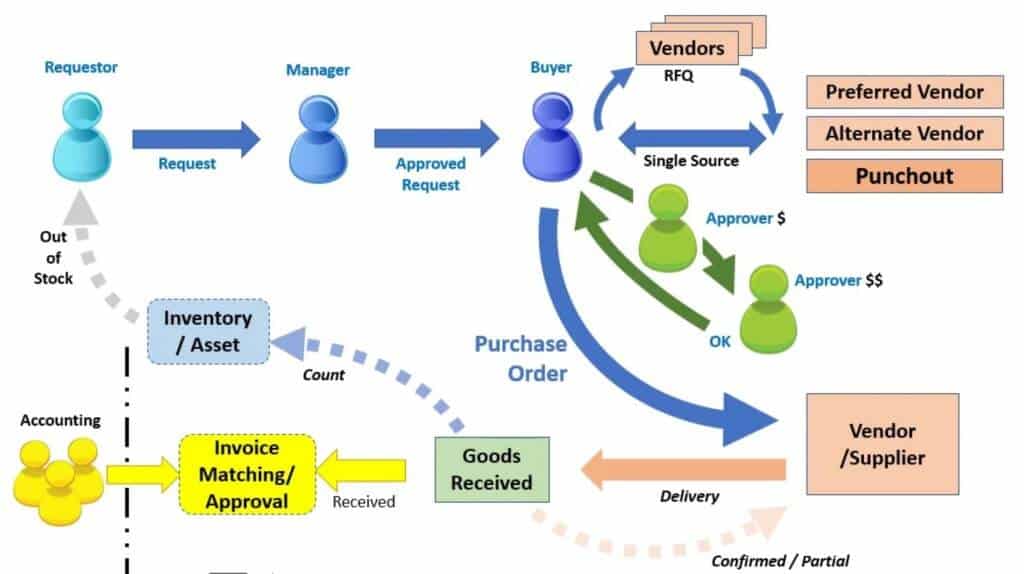Depending on the nature of your business you may refer to these documents in a different way using different terminology.
However in effect, the function of these two documents is similar across all businesses. The documents themselves do serve a different purpose and here at Eyvo we specifically differentiate between these two functions.
Purchase Requisition
Sometimes this just goes by the name of requisition or by the mnemonic “PR”. This is an internal document that is normally interdepartmental where somebody in the business wishes to purchase something but they do not have the power to issue a purchase order on their own. So instead of issuing a purchase order, they raise a purchase requisition – this details specifically the item or service they wish to procure for their part of the business. Invariably this has traditionally been a simple piece of paper where the requester completes it and then sends it to their manager who signs it and sends it into purchasing to raise a purchase order. Purchase requisition approval is an optional aspect within the Eyvo system – it’s optional because it is not a legal financial instrument – it’s just an internal document and as such has no value beyond circulating the fact that this person would like to buy something. It can also be used for budget checking prior to purchase, to ensure that funds are available before the purchase order is issued. At its very core, the PR only needs to specify the person’s name, their location, the suggested vendor, the description and quantity of what is being sought and if possible the price (or some idea of the price).
Once completed this then gets routed to the procurement department for onward processing into an eventual purchase order. To help with tracking, the PR will be issued with a sequence number generally called the ‘requisition number’ – this number follows through to the purchase order for audit and tracking after the purchase order has been raised. So in essence you should be able to track the life-cycle of this purchase requisition from inception all the way through to final payment of the invoice.

A purchase order (aka “PO”) can be generated from a requisition or can be directly entered without the need for a requisition – but in either case, a purchase order is a legal financial contract between you and your supplier. So purchase order approvals are an essential part of the buying process. You want to ensure that you have the funds available to spend and that the correct budget holder (and any other responsible parties for spend within the organisation against that line of business) have had sight of this proposed spend and have approved it by signing off on it. The purchase order itself will also contain account coding information to ensure that the spend has been internally booked correctly for the finance department; it will contain the suppliers details, invoice instructions terms of payment plus it may also contain the requisition number but this is not an essential element on the printed copy of the purchase order. The purchase order will of course have its own unique reference number called the purchase order number and this should always be quoted by the receiving supplier on any invoices that the supplier submits to you.
In this manner all documentation is tied together by the use of both the requisition number and the purchase order number.
Please Contact us for further information on how Eyvo processes these types of documents.

